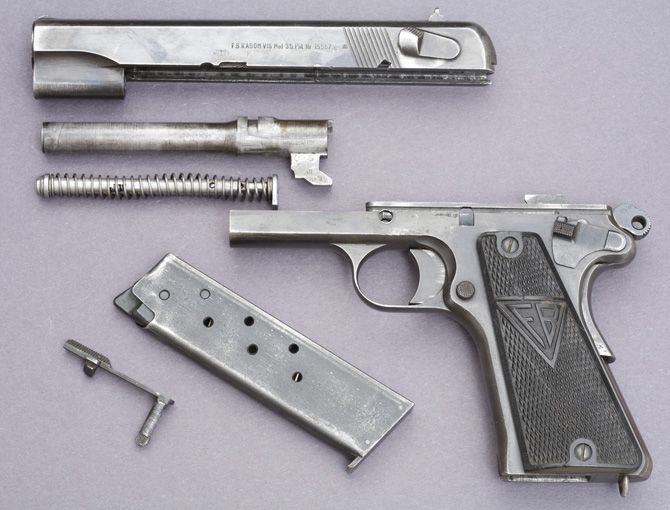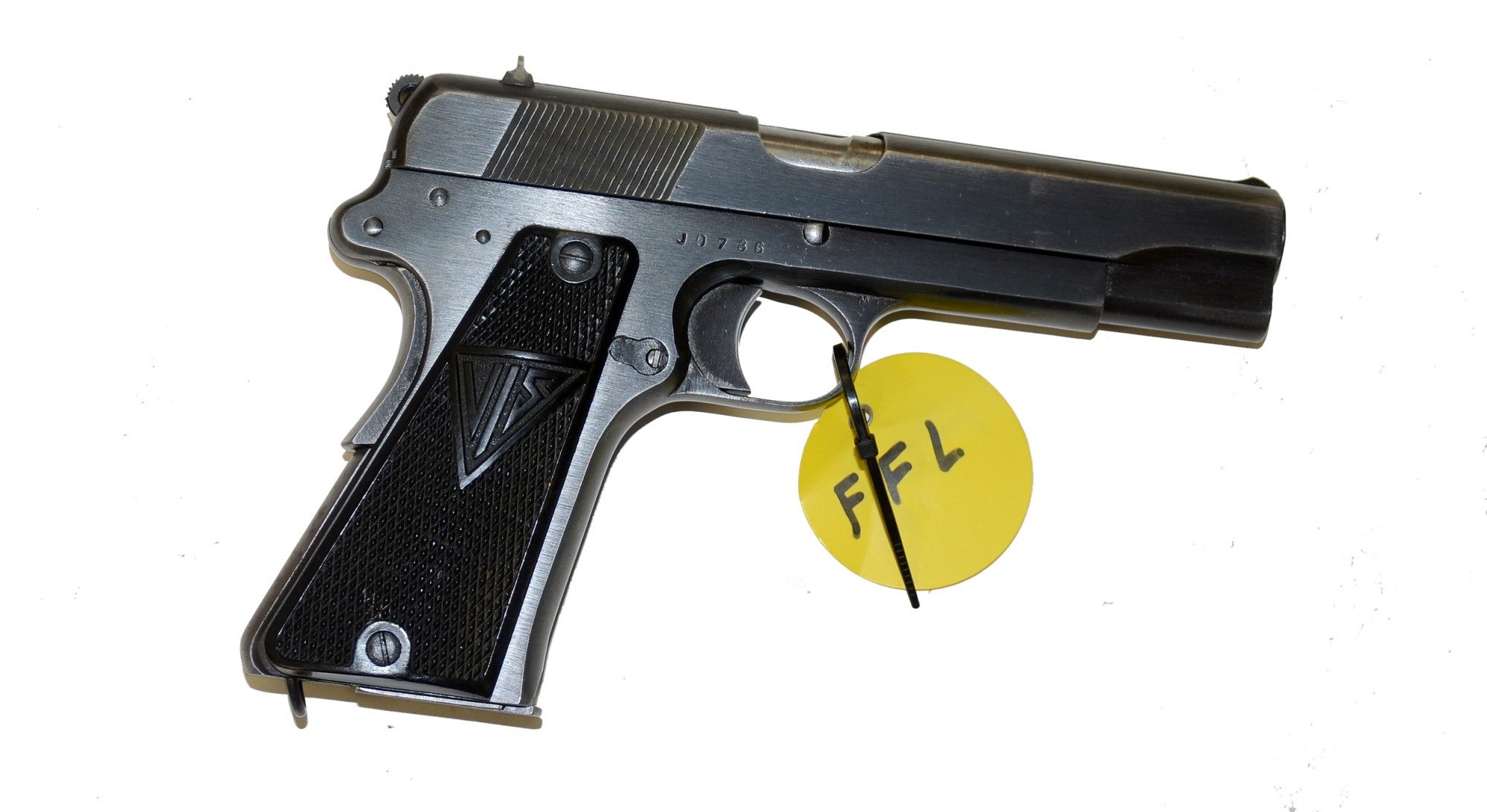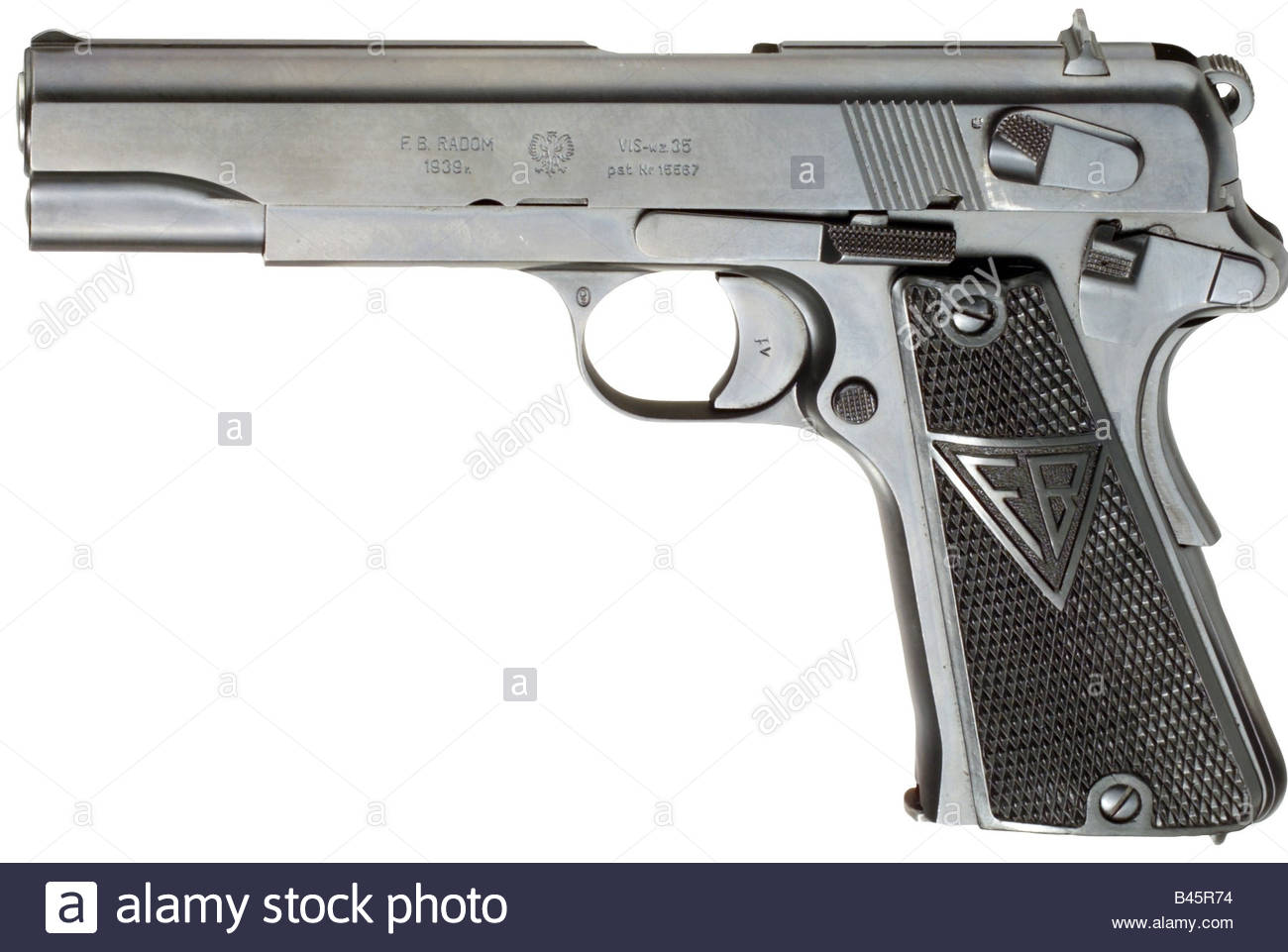
#Vis radom p35 serial numbers series
Īfter the Polish defeat in 1939, the Germans took over the Radom Armory and continued production of the Vis under the new name of 9 mm Pistole 645(p), which was for some reason often rendered as P 35(p) (the suffix "p" means "polnische") (the German pistols of the first series had inscriptions VIS Mod.35 and P.35(p) on the left side ). 22 LR variant also existed, but no details are known, and its series was not produced in great numbers. 45 ACP version, with 7 round magazine, but they were not produced in greater series. There was also a small information series of. Before the Invasion of Poland, approximately 49,400 (out of 90,000 ordered) were delivered to the army. By mid-1938, it was introduced to the armored and air forces.

Successively, other units were to be equipped, and by 1942 all other handguns were scheduled to be withdrawn from service. Production started in the state armory Fabryka Broni in Radom in late 1935, and the following year it was introduced as the standard weapon of Polish infantry and cavalry officers. The Vis was generally regarded as one of the best military pistols of that period. The tests proved that the handgun was very accurate and stable (due to its size and mass, most stresses are absorbed and not passed on the shooter), while at the same time remaining reliable after firing more than 6,000 rounds. Initially it was named WiS (an acronym of the Polish designers' names), later the name was changed to Vis, meaning "force" in Latin, with the wz. The handgun was prepared in late 1930, and at the beginning of 1931 the first pistols were ready for testing. On the right side grip cover, the pistol had letters VIS in a triangle, on the left side-FB (for Fabryka Broni-"Arms Factory").įile:Vis wz 35 (Radom 9 mm, P.35p) pistol.gif Its characteristic feature was a triangular grip shape, wider at the bottom, offering good ergonomics and firm grip. It differs from M1911A1 also in other details.

Unlike M1911, the barrel was not cammed by a link, but by a ledge of sorts, which contacts a portion of the barrel and forces it down as it is moved rearward with the slide by the recoil force, similarly as in Browning's FN Hi-Power pistol and Spanish Ruby 0.45 ACP. The design was generally based on American firearms inventor John Browning's Colt M1911A1, operating on the short-recoil principle, with the barrel being cammed down and away from the locking lugs in the slide. Considered by many to be one of the finest handguns ever produced, it is highly prized among collectors of firearms.

Originally designed by Piotr Wilniewczyc and Jan Skrzypiński in 1930 at the Fabryka Broni (Arms Factory) in Radom under Director Kazimierz Ołdakowski, it was adopted in 1935 as the standard handgun of the Polish Army.

35 Vis, German designation 9 mm Pistole 35(p), often referred to as the Radom in English sources) is a 9 mm caliber, single-action, semi-automatic pistol.


 0 kommentar(er)
0 kommentar(er)
